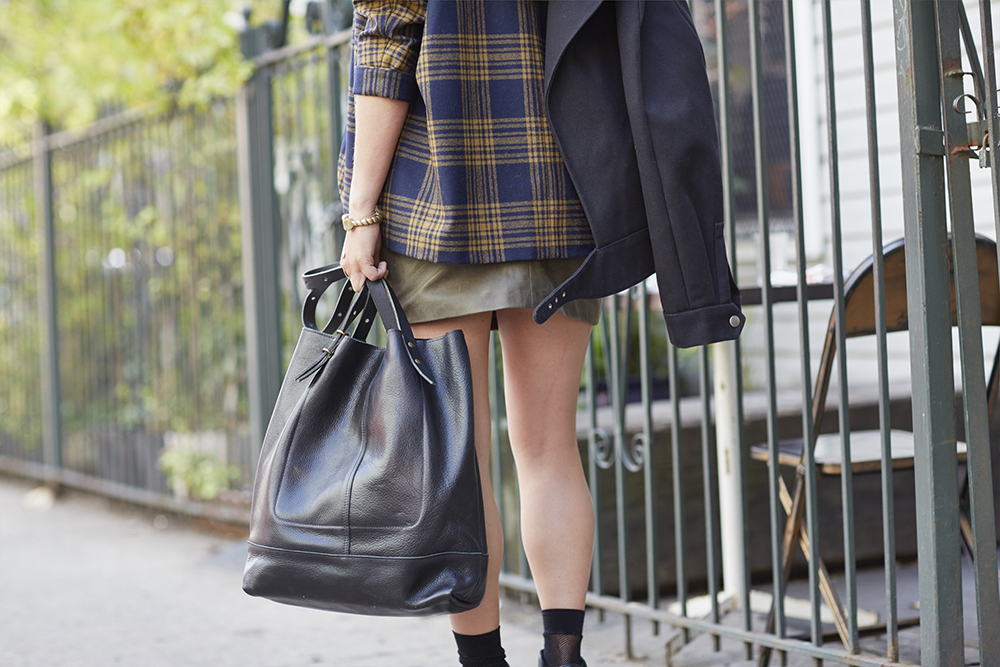May 22, 2016
TM1985
Maker Spotlight
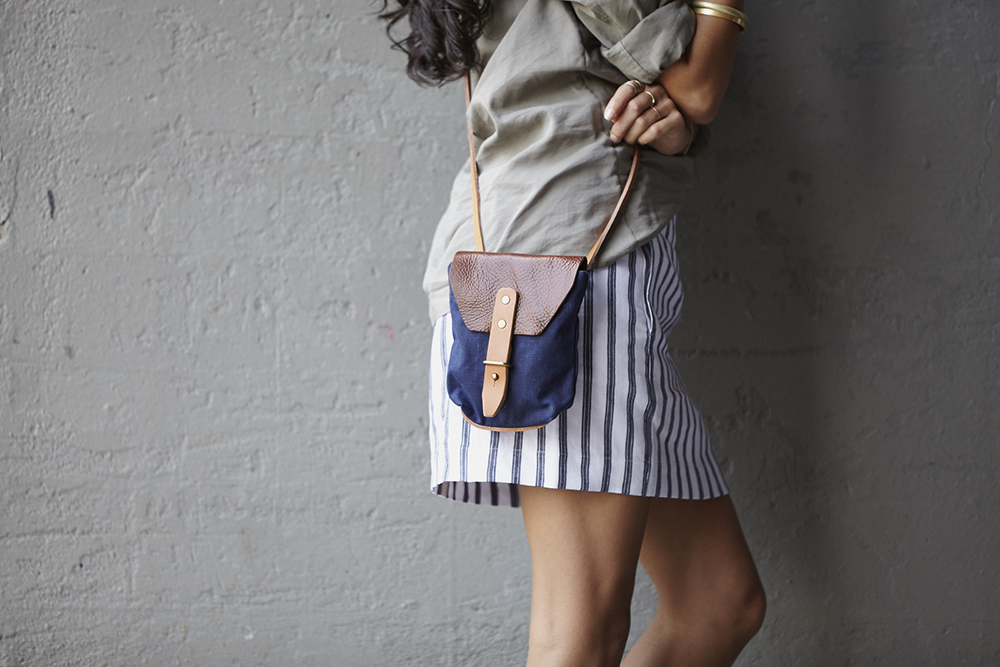
TM1985 is one of our favorite bag companies. Founded by Tielor McBride, TM1985 took its Midwestern roots and moved to New York City to design leather and fabric bags that are both functional and beautiful.
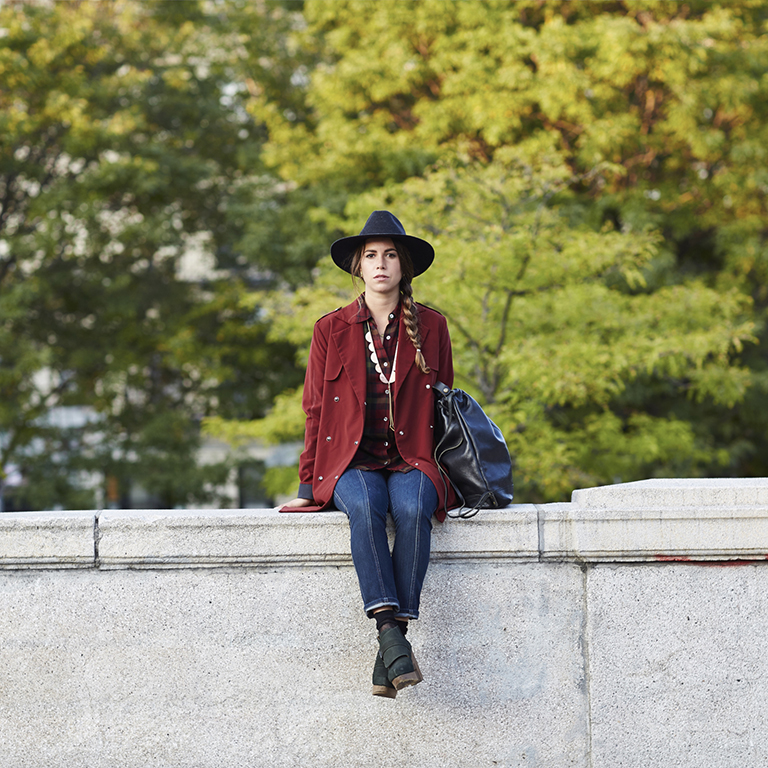
Where did your business name come from? Is there an interesting history behind it?
TM is two-fold – they are my initials and they also stand for “trademark.” 1985 is the year I was born.
Have you always been passionate about design?
As a little kid I was always fascinated with the way things were made. I remember sitting in the garage hacking apart an old microwave to see what was inside that made it work. My fascination with functionality and process led to design and creation. In college, I studied theatrical design, with a focus in costume and set design. Studying time period, location and cultures, clothing, accessories, furniture, and architecture in depth, really helped me get a better sense of creating worlds through design.
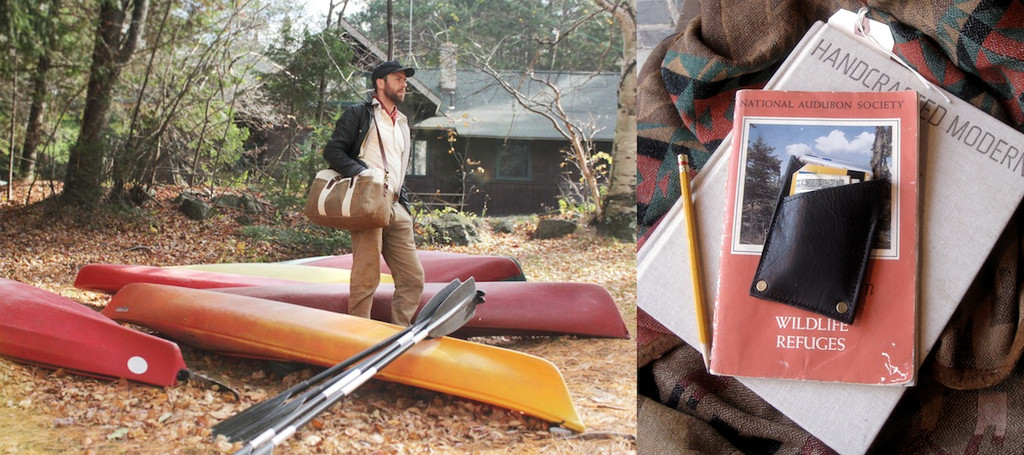
When/Why did you start working in this particular craft/field?
After school, I moved to New York and took a job as a window designer at Polo Ralph Lauren. I was in charge of the flagship store and helped design global directives for interior and window displays. The job was totally different than what I ever imagined myself doing. It was essentially like grad school. I learned a lot about the fashion world: the structure of seasonal delivery and scale of manufacturing and global brand presence. A promotion ended up pulling me further away from the hands-on creation I’d really come to love and depend upon. Fulfilling that desire, and out of sheer necessity for a utility bag, I created my first Roll-Top Backpack in the tailors shop of the Polo Men’s Store. I received a lot of positive feedback on the backpack and realized the potential for a viable business. Just before I left Polo, I officially started TM1985.
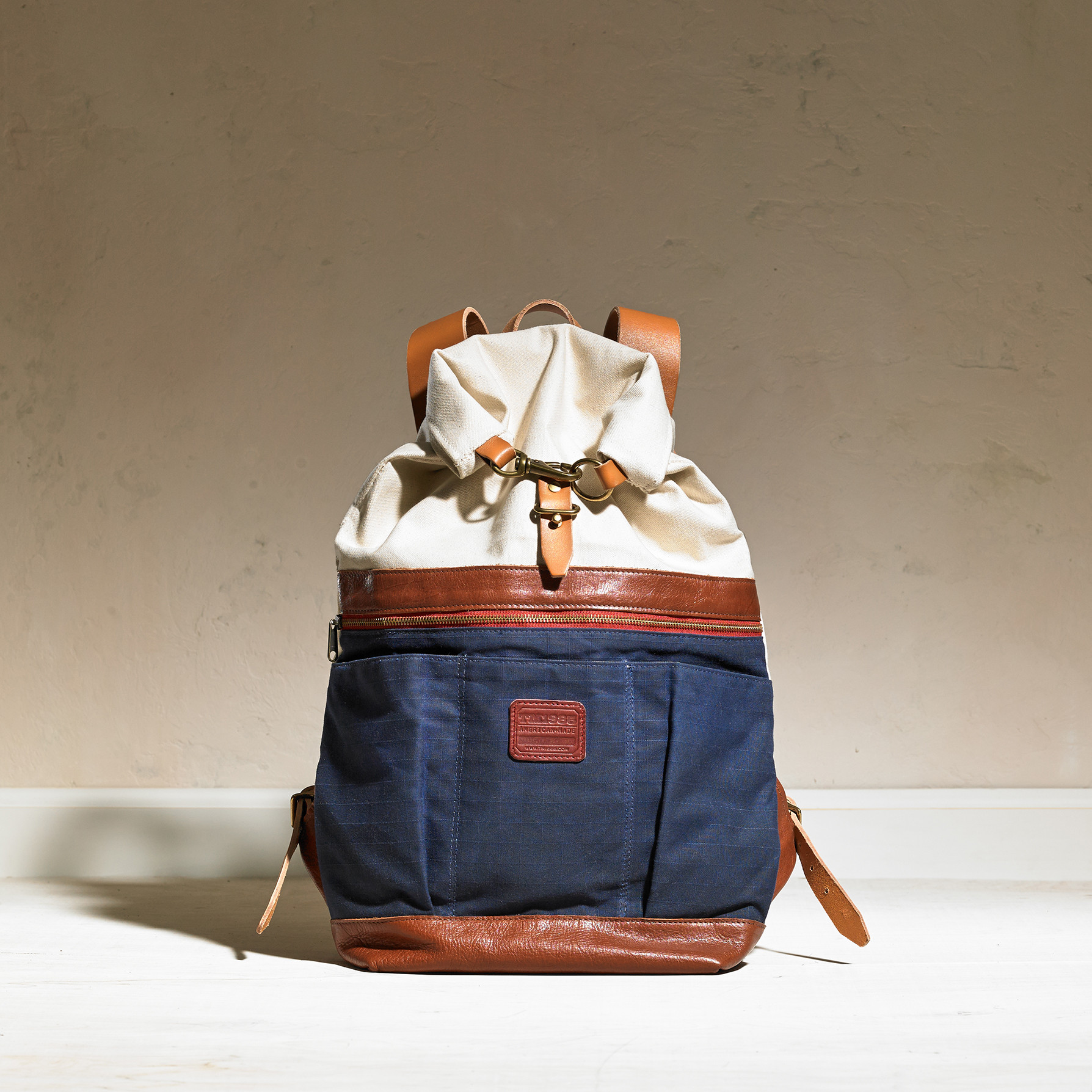
What do you think sets your designs apart from others?
Versatility of the designs matching the fluidity of our customers’ lives is key. Our bags are created to be functional and are built with integrity to support our customers in their daily lives. Take, for example, our newest addition: the Drawstring Backpack. It’s a 3-in-1 bag that takes you from a bike ride, to running errands, to out for drinks, all with a simple adjustment to the shoulder straps.
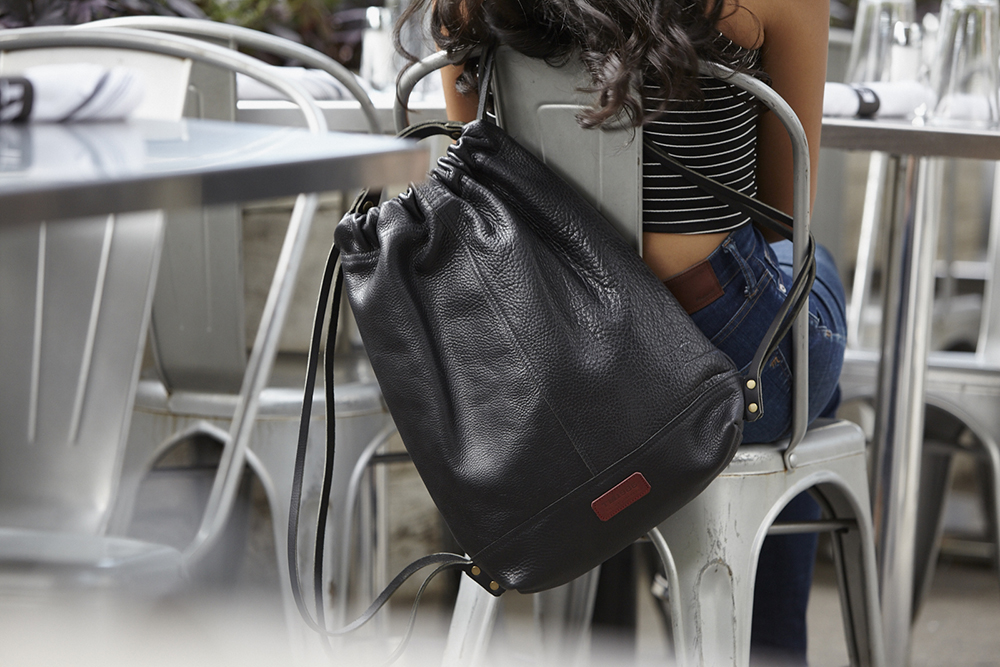
Have you had any major failures? If so, what were some important insights gained?
The first big order that came my way was for a client wanting a custom order. The buyer talked me into making 1000 Dopp Kits at a ridiculously low price. They could only pay for half up front and when the sale launched and I delivered my goods . . . radio silence. After several attempts in retrieving the remaining balance, the buyer claimed they were going out of business and had no funds. My advice: Get the money before making custom products and delivery of final product only occurs upon receiving final payment.
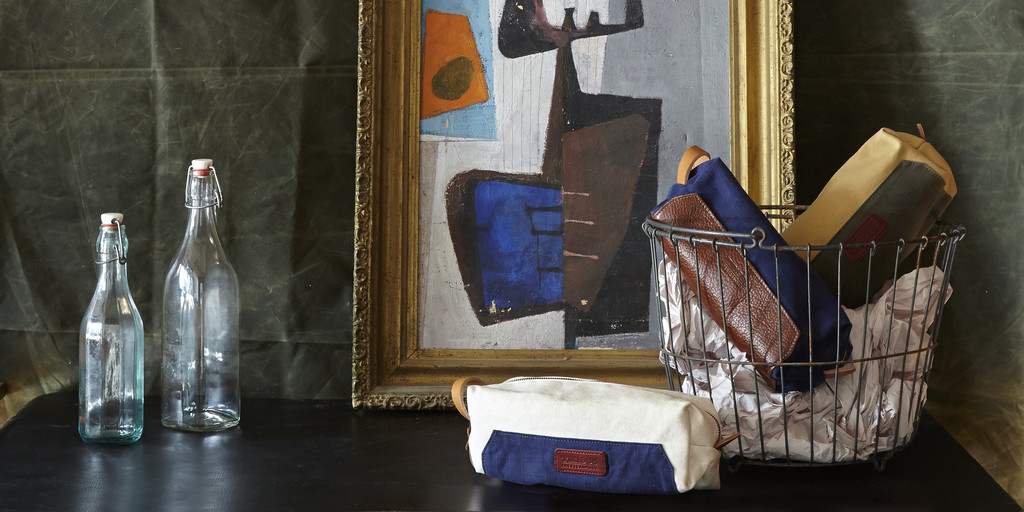
Have you sacrificed anything to create your business? If so, what was it, and do you have any regrets?
There is always going to be compromise when you are running your own business. It’s par for the course. What you get back in terms of creative freedom and the satisfaction of steering your own ship far out ways any sacrifices you’ll make.

What has been your proudest/favorite moment since creating your business?
Earlier this year we rolled out three new bags at once. It was exciting to be working through three different designs simultaneously. Truthfully, I’m always looking ahead to what’s next, so my favorite project is always my next one.
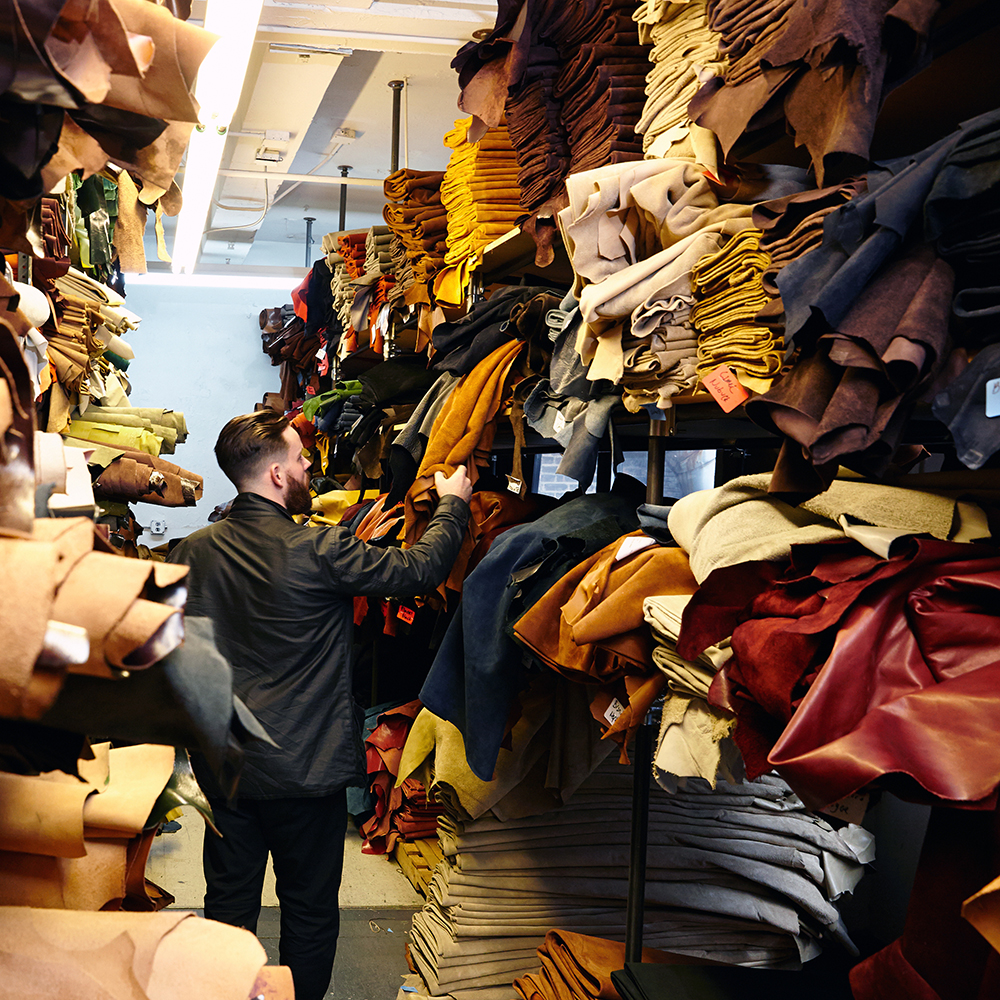
How does the city you live in influence your work?
Living in NYC and having the right kind of bag go hand in hand. Not having had a car here has made me think a lot more about the daily utility and functionality of my bags and how I can continually optimize them. Different activities have different needs and call for something specialized: hiking trips upstate, schlepping materials across town, trips to the library or the market. I want to create products that appeal to the fluidity of people’s lives. Few people do just one thing anymore and our bags are meant to be with people on their journey.
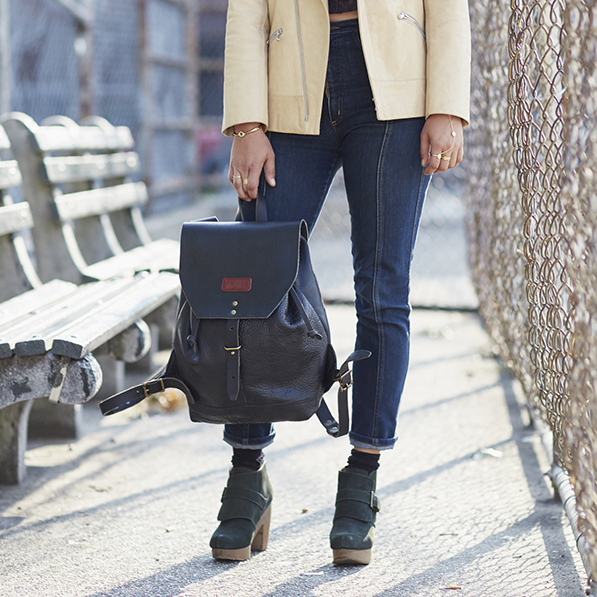
What valuable experience/knowledge did you have before starting your business?
My education in technical theatre gave me a lot of skills that are still very useful today. Understanding the importance of collaboration, delegation, relying on others to contribute what they do best, their expertise and understanding how to build from scratch so all needs are met. Design through well executed ideation, research and practical application has been hugely important.
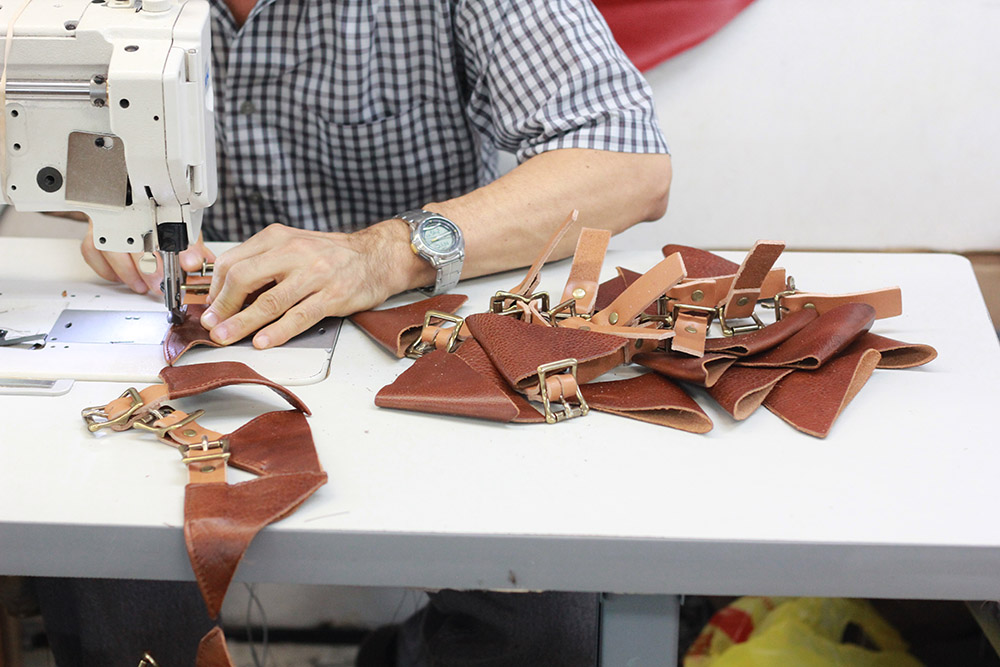
What are some inspirations for your work?
I’m a practical man. I need to hold something in my hand, to see it, touch it, smell it and know it’s good. In that way, the materials inspire the designs. Materials inform about 90 percent of my design and ideation process. I can sketch a simple plan for a bag but it’s not until the materials have been selected does the design have any real body. Picking the right combo takes time but I feel that it’s one of the most important steps.
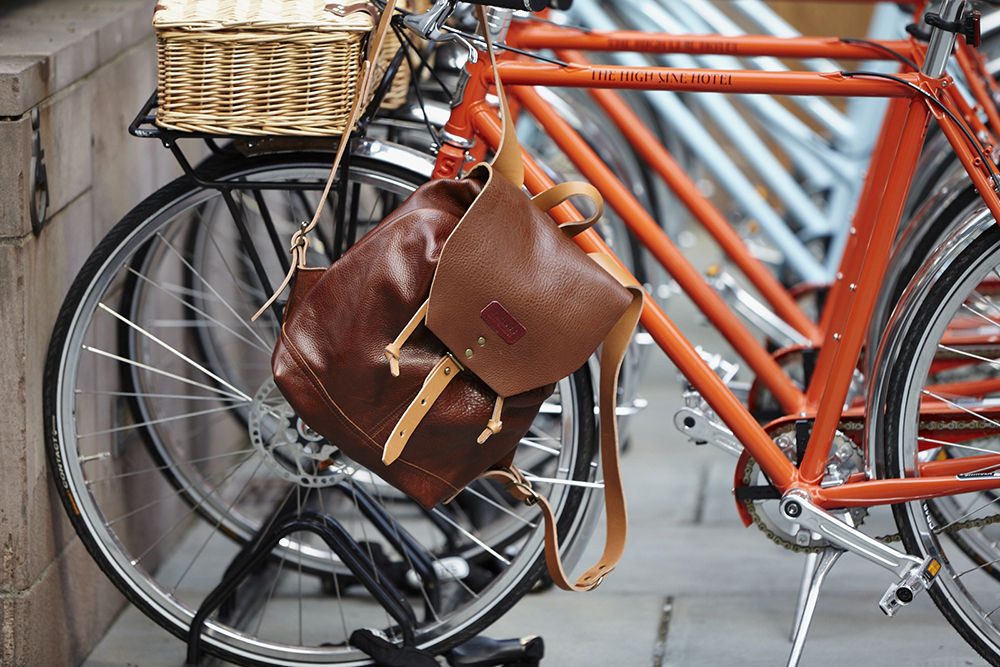
What are some tips or suggestions you’d like to offer to fellow makers?
JUMP! Listen to your gut. It’s old news that you should go after what makes you happy, but often times your mind is running through the unending list of challenges that you’ll face and you quiet your instincts. To help assuage your mind, and to keep you from stopping yourself before you start, make a list of everything you need to do in order to get your business started, put them in order of importance and then list what is needed to accomplish each one. Any day of the week, looking at the bigger picture is sometimes enough to shut the door and pull the covers over your head, but it’s important to remember that one large business is built on a lot of small ideas and associated tasks and projects. Anybody in your family who works with either leather or bags. Strangely enough, after I started working with leather and canvas, I found out that my mom’s great-grandfather Christen Hansen, who immigrated to the States from Denmark, owned his own horse tack and boot shop in Elk Horn, Iowa. He made all the goods on site and sold it to local Danish immigrants. I recently found a picture of him from 1922, standing in the middle of his shop surrounded by all of his harnesses, tack, boots and tools. The link between the past and the present has always been strong for me. Seeing that photograph made what I am doing more meaningful.
